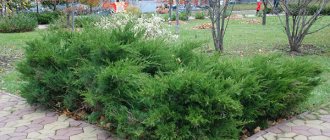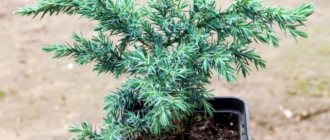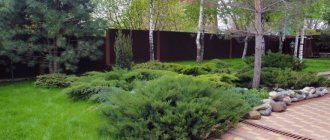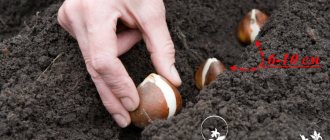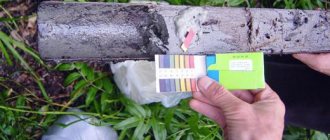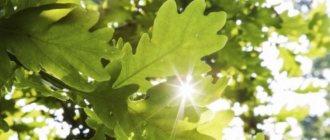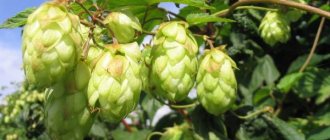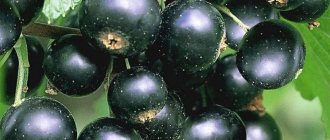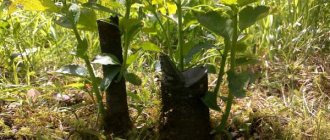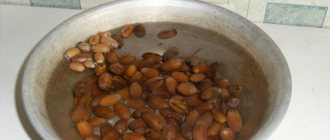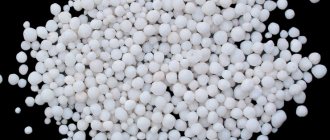How to care for juniper in the fall: basic steps to prepare conifers for winter
So, here's what you need to do with juniper in the fall to properly prepare it for winter:
- feed with autumn fertilizer;
- perform moisture-charging irrigation;
Advice! Autumn fertilizing should be done before frost (at least 2 weeks, preferably 3-4, i.e. a month), so that the plant has time to absorb nutrition, as well as moisture-recharging watering, until the temperature drops below zero at night, and during the day another plus.
- carry out sanitary pruning and shaping haircut;
- treat against diseases and pests;
- cover for the winter, or rather, protect the needles from snow sticking and sunburn, and also mulch.
Video: autumn preparation of conifers for winter (including juniper)
Regional distinctive features
The need for shelter and the method depend on the climatic conditions of the plant’s growth. Caring for juniper in autumn and summer in different regions also has its own characteristics. In the Volga region, juniper must be protected primarily from sunburn. To do this, the plant is loosely wrapped several times with cotton fabric, burlap, or tulle so that the bush can breathe. In the middle zone, the plant is most often covered with spruce branches and snow is poured on top. In Siberia and the Urals, they are wrapped with a special covering material, young trees are dug up and brought indoors.
Using these tips, you can provide the juniper with proper care, and in the spring the bush will delight the eye with the brightness of its greenery.
Juniper is considered a very frost-resistant crop, like all coniferous plants; it is not afraid of even extreme cold. But nevertheless, it needs shelter for the winter.
Read also: How to wake up onions with greens stimulants
Autumn feeding of juniper
To better prepare the juniper for winter and increase winter hardiness, you can feed it with autumn fertilizer, of course, if in the spring you did not give a long-acting complex fertilizer (they also say “long-acting”).
Worth knowing! Autumn fertilizer is a fertilizer with a high content of phosphorus and potassium (without nitrogen). Superphosphate is suitable for phosphorus, and potassium sulfate (potassium sulfate) is suitable for potassium.
If you don’t want to bother, you can simply buy ready-made fertilizer marked “autumn”, and there is a special “Autumn Fertilizer for Conifers” on sale.
In addition, in the fall it is highly recommended to foliar feed the juniper with magnesium , namely, spray the crown of the plant with a solution of magnesium sulfate (10 grams per 10 liters of water). This will be an excellent prevention of browning and yellowing of needles due to sunburn due to the accumulation of magnesium by the plant.
Is it necessary to cover juniper for the winter?
@plodovie.ru
The need for shelter depends on several factors:
- Region of growth: in the southern area they are left unprotected, slightly mulching the base of the trunk. In northern regions, where there are often severe frosts and gusty winds, small specimens of conifers are often dug up, moved into large pots and sent to cool rooms for the winter.
- A type of juniper. There are more resistant and less resistant varieties of conifers.
- Plant age. Young juniper seedlings are considered weak and fragile, and therefore require additional protection from bad weather.
Reference! In the matter of covering juniper for the winter, objective and subjective circumstances play an important role, ranging from weather conditions to the choice of planting site.
Autumn moisture-charging irrigation
If there is poor precipitation in the fall, continue to water your junipers periodically. At the end of the summer season, be sure to carry out moisture-charging irrigation to saturate the entire root system of the conifer with moisture. Then the earthen lump will freeze less, and the juniper will be warmer in winter. And at the end of autumn and beginning of winter, if it is sunny, it will be able to safely evaporate moisture
Advice! If you have the opportunity, then in early spring or even at the end of winter (in February-March) it is also very advisable to carry out moisture-charging watering with hot water (but not boiling water) in order to saturate the root system of the conifer at the most necessary moment - when there is increased evaporation. This will help prevent the needles from drying out and turning yellow (sunburn).
Important! If you have high groundwater (1.2-1 meters), then water-charging irrigation is not recommended. But in early spring, you can sprinkle the crown (i.e., deliver moisture directly to the needles).
How to plant juniper correctly?
When buying a seedling, you need to collect as much information as possible about the variety you like. The gardener should be interested in such aspects as winter hardiness, height of an adult specimen, care features, shape and color of the crown. When purchasing, it is advisable to give preference to seedlings with a closed root system; it is better if they were grown immediately in a shipping container rather than dug out of the ground. The color of the crown should be rich and uniform, and the bark of the trunk should be without cracks.
When to plant juniper and how to choose a suitable place?
Gardeners often have doubts about when to plant juniper, in spring or autumn? If the seedling was purchased in the fall and has a well-developed root system, then it can be planted in open ground in October. This is especially true for specimens with an open root system, which should be planted as quickly as possible. If the seedling is in a spacious container, then planting can be postponed until spring. It is believed that at this time the juniper takes root better and has time to get stronger before the onset of winter. The most favorable time for spring planting is from the beginning of April to the end of May, depending on the climatic characteristics of the region. Professionals recommend carrying out the procedure as soon as the snow begins to melt.
Particular attention should be paid to the location on the site; juniper will need a lot of sunlight to maintain its decorative beauty. Therefore, it is best to plant it in open meadows, flower beds or along the site on the south side, forming a hedge. A tree growing in the shade will become dull in color and its branches will grow very slowly.
Soil composition requirements
Before planting juniper, you should carefully study the composition of the soil on the site. Some species (common juniper, Cossack and Central Asian) prefer alkaline soil composition. For others, an acidic reaction is more acceptable. To create an acidic environment, peat with sand is added to the ground or mulched using wood shavings and sawdust. If, on the contrary, an alkaline environment is required, slaked lime or dolomite flour is used. Juniper needs to ensure good aeration of the root system, so drainage must be added to the planting hole: crushed brick, river pebbles or large expanded clay.
Planting juniper
Juniper - planting and caring for it will require certain skills, in addition, the younger the seedling, the better it will tolerate this procedure. It is not recommended for an amateur to purchase adult specimens older than 3 years. Before removing the seedling from the container, you need to generously moisten the lump of earth and let it stand for about two hours.
Planting is carried out in several stages:
- It is necessary to dig a planting hole measuring 100x100x60 cm, where 60 cm is the depth. The hole should be two to three times larger than the lump of soil from the shipping container. Place a drainage layer on the bottom.
- For better rooting, it is necessary to prepare a nutrient substrate and plant the tree in it. The mixture is prepared depending on the requirements of a particular type of juniper. A universal composition suitable for most types: turf, humus, peat and river sand in a ratio of 2:2:2:1. It is recommended to add universal fertilizer - nitroammophoska in an amount of 200-250 grams - to the planting hole.
- The seedling is carefully placed in the hole, trying not to injure the root system. Very young specimens are deepened into the ground to the same level at which they grew in the container. Older seedlings are planted in such a way that the root collar rises 8–10 cm above the top layer of soil.
- Caring for juniper after planting involves abundant watering and mulching the soil. Peat, wood shavings or sawdust, and small wood chips are used as mulch.
When planting a group of junipers, it is important to maintain a distance between them. For low-growing shrubs 0.5 m is enough, for tall trees with a spreading crown - from 1.5 m to 2.5 m.
Pruning juniper in autumn and spring
Juniper does not need pruning as such; another thing is that every autumn and spring you should carry out sanitary pruning , cutting out dried and broken branches, and also clean the tree of dry old needles .
If you have made a hedge of junipers or formed it in the form of a column (made some kind of topiary or curly haircut), then in the fall you can slightly adjust its shape and trim the protruding branches.
The essential oils contained in juniper resin are quite caustic (if they get on your hands, they can cause irritation), so pruning should only be done with thick canvas gloves and closed clothing .
How to feed juniper
Juniper is a fairly unpretentious crop that does not require much effort in caring for it. It does not need constant feeding and can grow successfully in rather unfavorable conditions. However, when growing juniper in the garden, it does not hurt to feed it occasionally to ensure uniform development and a consistently healthy and attractive appearance of this evergreen plant. It is enough to apply fertilizer twice during the season so that the coniferous shrub receives all the nutrients necessary for its growth. This article will talk about what to feed juniper and how to do it correctly.
Autumn treatment for diseases and pests
If autumn is warm and humid, then spraying juniper against diseases (fungal) is simply necessary.
In other words, if during inspection you notice that there are fungi and insect pests on the bushes, you can carry out both preventive and eradicative treatment.
As a rule, most often treatment for fungal diseases is carried out with copper sulfate or Bordeaux mixture (but in a very weak concentration, approximately 100 g per 10 liters for treatment, 50 g per 10 liters for prevention), or with special preparations such as Hom, Abiga- peak (both based on copper oxychloride). However, it is in the fall that it is good to treat conifers with iron sulfate (also no more than a 1% solution) , and not with copper sulfate.
For pests , you can use insecticides such as Intavir, Fufanon (according to instructions).
Also, sulfur-based preparations are suitable for autumn treatment of coniferous plants against diseases and pests - Colloidal sulfur, Thiovit jet (according to instructions).
You can also carry out complex treatment against diseases and pests , for example, with Horus (fungicide for diseases) and Aktara (insecticide for pests). Moreover, you can mix both drugs at once, i.e. prepare tank mixture.
